Irish Setter
The Irish Setter is a popular breed of gundog (gundogs, or bird dogs, are hunting dogs that help hunters in finding and retrieving gaming birds). They originated in Ireland in the 1700s, and their popularity soon grew rapidly and mostly because of their long, beautiful, red coat and their working enthusiasm.
Hunters worldwide were extremely happy with the job these dogs did for them and their soft jaws. Having a soft jaw is important for all dogs that are retrieving since birds' feathers can easily be damaged and the hunter’s prey gets damaged.
If you are interested in this dog breed before you start searching Irish Setter breeders make sure to experience this dog breed so you can be completely sure that this is the right dog for you and your lifestyle.
These dogs have now successfully migrated to a more peaceful family pet life and are very popular due to their playfulness and good temper. Their popularization was additionally increased after the Walt Disney movie Big Red.
Dog Breed Video

Height:
25-27 in (63-68 cm)

Weight:
60-70 lb (27-32 kg)

Origin:
Ireland

Life Expectancy:
11-15 years
Dog Breed Characteristics
The Irish Setter dogs come in two types: show dogs and field dogs. Irish Setter show dogs are larger and heavier. Regardless of the type, the Irish Setter is one of the most beautiful dog breeds there is, thanks to their wonderful red coat.
The Irish Setter colors are most usually deep red or some shade of chestnut or mahogany. The early Irish Setters had bicolor of red and white, but because the deep red colored coat was the favored choice when it came to dog shows, red and white Irish Setters nearly became extinct. Only a small amount of white on the chest, throat, toes, or forehead is permissible – black is not allowed.
The Irish Setter is somewhere between a medium-sized and large-sized dog with an athletic body and long head, long legs, and a strong tail that they usually carry horizontally. Their coat is long and silky. A short-haired Irish Setter can be seen in the hunting field, but for dog show purposes – the longer the coat, the better.
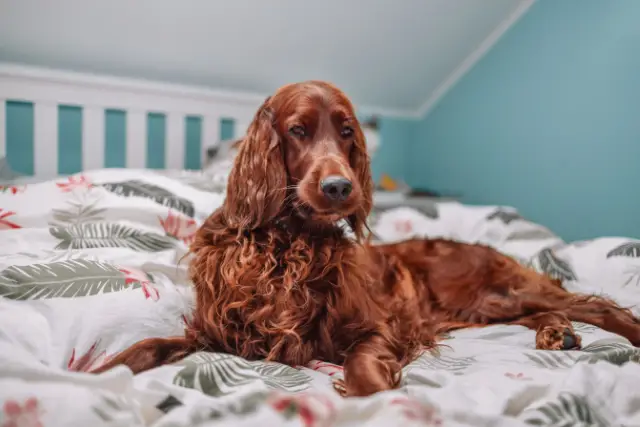
Irish Setters need to be groomed a few times a week at least in order to stop their hair from getting tangled. Their hair sheds moderately, especially if they are brushed regularly.
Grooming and care
It is relatively easy to take care of the Irish Setters coat. The hair on their head, the front part of their legs, and the tips of their ears are quite short and thin. Other parts of their body are mostly covered with hair that is medium length, straight, and shouldn’t be curly at all. The hair on their ears, or so-called “feathering,” is somewhat longer and silkier. The back part of their front legs and on the hind legs, the hair is quite long and smooth, with a decent amount of hair on the belly, which forms a fringe that can reach all the way to their chest and throat.
Grooming their coat requires special kinds of brushes, and the best thing to use is a so-called bristle brush, a pin brush can be used if there is a need for it, a “wide-toothed” metal comb and some sort of finishing comb for achieving the smooth and silky finish this breed is known for.

If you want to keep their coat in the best possible state, it is recommended that you brush your Irish Setter at least twice a week or if you lack the time, take your pup to a professional who can do it for you. Bathing is required once every three months or more often if there is a need for that. Of course, you should use natural shampoos and conditioners. A great tip is to brush the dog before giving it a bath so you can prevent tangles and mats.
A big part of proper care is teeth cleaning and it should be ideally done every day. This aspect of dog care is often overlooked, and dog owners forget how important it actually is. It is best to use dog toothpaste that doesn’t have any toxic chemicals or ingredients that can harm your dog’s teeth or gums. You can also get a specialized dog toothbrush that has an elongated neck so you can easily reach your dog's back teeth.
Trim their nails if they don’t wear them down naturally. A good indicator is - if you can hear them clicking on the ground, it is trimming time!
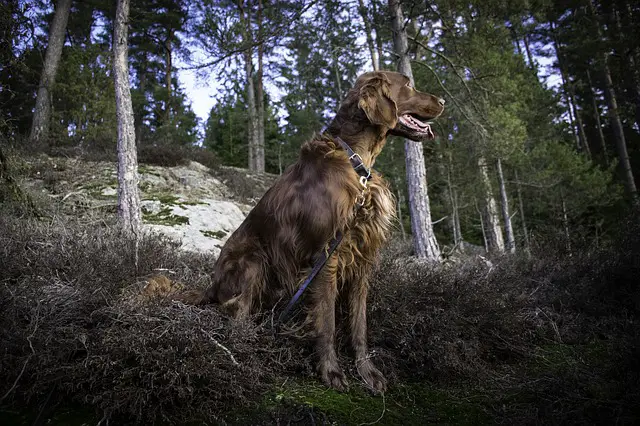
FUN FACT: Irish Setter's popularity in the USA increased during the 1960s and 1970s thanks to the books and Disney movie in which there was an Irish Setter called Big Red.
Training and socialization
The Irish Setter is an outgoing, exceptionally friendly, affectionate and loyal dog. They love their humans and always want to be the center of attention. They don’t like to be left alone. The Irish Setter gets along great with children and other house pets.
Sometimes, they can see pet birds as prey because of their origin. You should never leave your Setter alone with a pet bird since it is in their nature to view them as prey, and accidents might happen. These dogs are extremely active and have a lot of energy, which makes sense considering that they were bred for hunting purposes.
They need to be given a lot of exercise. Exercising them will also protect the health of their bones and joints.
They make excellent jogging, hiking, and cycling partners. The Irish Setter will be the happiest in an active family that can provide it the exercise it requires. Also, these dogs are not suitable for living in an apartment. Their ideal living situation is indoors with their owners but with access to a large yard.
It is important for these dogs to stay close to their family because, except for separation anxiety, they can suffer from attention deficit disorder. They are very intelligent dogs which makes them highly trainable. Keep in mind that although they are easy to train due to their intelligence, they also get easily distracted.
Still, many of them are trained and used as therapy dogs in schools and hospitals.
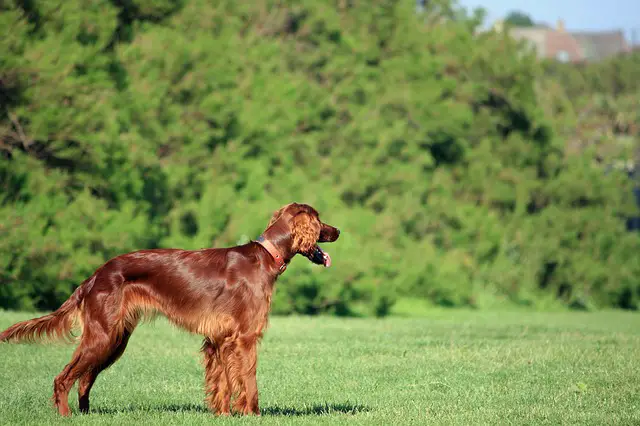
This breed will examine everything with their mouth, so crate training is necessary. These dogs are sometimes stubborn, mischievous, and independent, but with a patient, gentle trainer, they will be willing to learn almost anything. They mature slowly, so be prepared to have a big dog with a puppy attitude and energy for a few years.
Socialization is a big part of every dog's life, and it is best if you start as soon as possible with that process. Proper socialization will ensure your puppy develops in a well-balanced and well-behaved dog.
After your dog receives all the necessary vaccinations, you can start introducing them to many new puppy friends as well as new sights, sounds, people, and situations. Good socialization will teach your dog how to handle most of the new situations they encounter. This process will also make sure that your dog doesn’t develop negative habits, shyness or even aggressiveness towards other dogs, especially of the same sex.
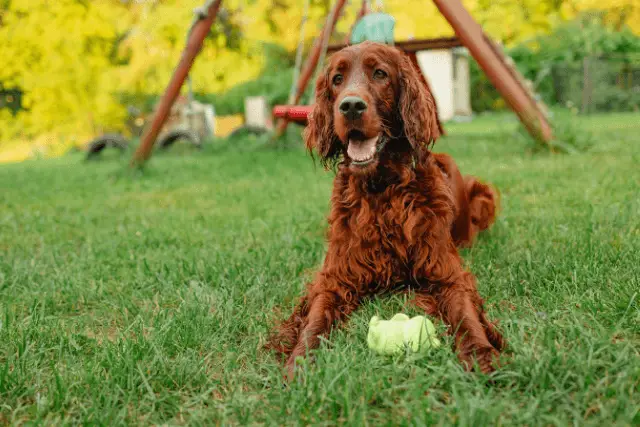
Health issues
Health conditions that Irish Setters are prone to are hip dysplasia, Osteochondrosis Dissecans (OCD) that usually occurs In the elbows, causing a painful stiffening of the joint, hypothyroidism (gland disorder that can cause obesity, mental dullness, low energy level, etc.), Canine Leukocyte (CAD) (an inherited abnormality that causes an inability for white cells to fight infections), epilepsy, Progressive Retinal Atrophy (PRA), etc.
FUN FACT: An Irish Setter named Shannon was owned by one of the Beach Boys, and that dog inspired the song “Shannon” by Henry Gross. “Shannon” was a hit and went gold in the U.S. and Canada.
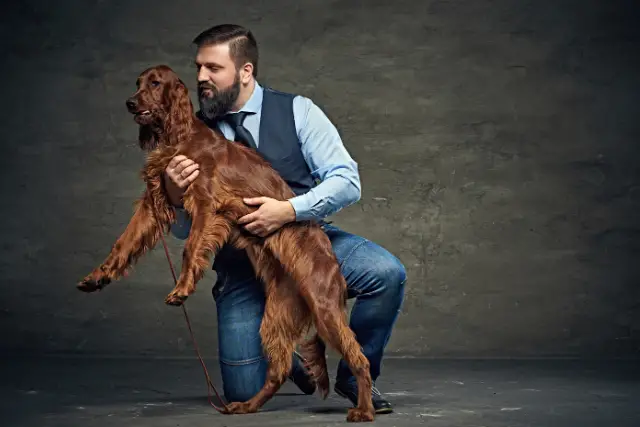
Irish Setter breeders
If you are thinking of buying this dog breed, make sure that you do your research. These dogs are usually in high demand, so you will most likely have to be patient and wait for your puppy. Also, make sure that the Irish Setter breeder you are thinking of buying from is a reputable one.
Buying a dog from an unregistered kennel can make your life difficult. This type of unregulated breeding is bad and usually, those types of breeders don’t take proper care of their dogs and put money before the animal’s welfare. These dogs can be sick, or their parents might have some genetic disorders that registered and reputable breeders are avoiding with their proper breeding selection.

Make sure to ask the Irish Setter breeder as many questions as possible about your new dog. They are usually very happy to answer them since they are also interested in what kind of homes their dogs will go to. Never buy a dog from a puppy mill breeder or a pet store, and always try to see the puppy’s parents.
See what kind of household they are living in, are the social, and what are they like to their puppies? After that, you can be sure that you made the right choice and that you are getting a great new family member.
World Dog Finder team

Updated at30.08.2023.
Breed History
One of the first mentions of Setter-type dogs was in Caius’ De Canibus Britannicus from 1570. In his book, Caius describes a dog that resembles a Setter and also describes in great detail their movement, quietness, and their eagerness to work. He clearly states that these dogs were extremely focused and were excellent hunting dogs.
It is also written in De Canibus Britannicus that these dogs used to approach fowl with great stealth. When approaching the place where birds were hiding, those dogs used to creep forward, nearly lying on their belly and scratching the ground with their paw where the birds used to be. That is the first mention of the Setter name, as Caius says: “Setter, being indeed a name most consonant and agreeable to his quality.”
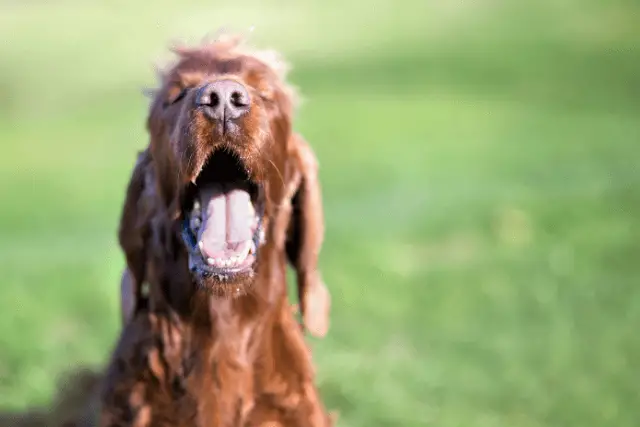
Although this is very amusing and certainly very interesting, he was probably not referring to Setters as we know them today and was most likely talking about some sort of settering spaniel-type dogs that are now probably extinct. There was also one more reference to Setter dogs from 1616 that describes them as “land spaniels” that are called Setters.
At the beginning of the 18th century, the Irish started breeding their unique strain of Setters, and by the end of that very same century, they were already keeping detailed breeding records. Some of the most famous and richest Irish families of that time were known as Setter breeders, such as the de Freyne family of French Park, and important individuals such as Lord Dillon, Lord Clancarty, and the Marquis of Waterford.
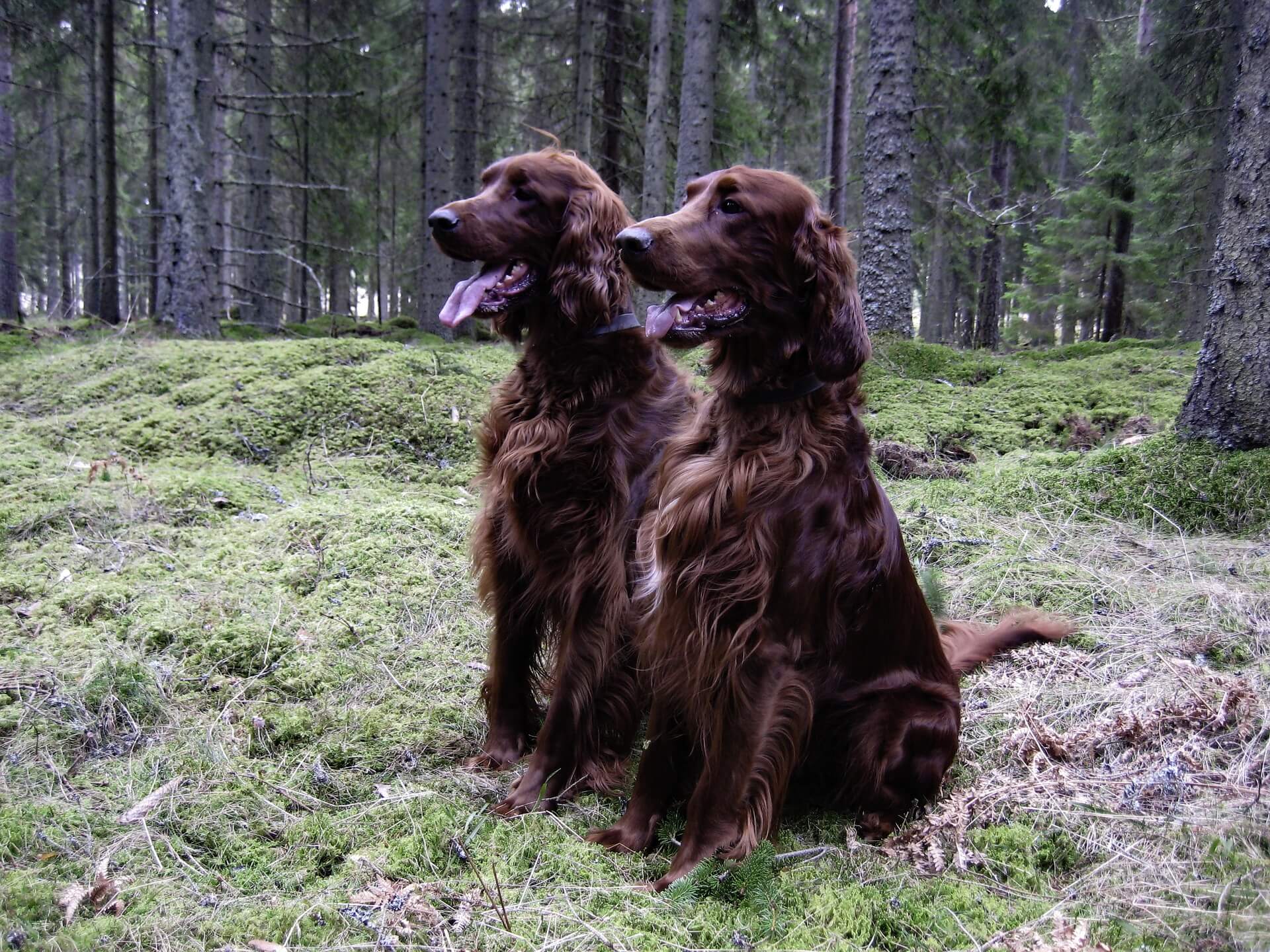
FUN FACT: At least three American Presidents owned an Irish Setter during their tenure in the White House - Harry Truman, Ronald Reagan, and Richard Nixon.
Dogs that were bred at that time weren’t mostly red-colored as we know them today; they were either red, red and white, lemon, or white with deep chestnut color. The modern breed as we know it today is a result of selective breeding of this breed and a clear preference towards red-colored dogs.
The first breed standard was written by one of the oldest breeding clubs in the world, The Irish Red Setter Club, which was located in Dublin, Ireland. It was based on a 100-point score. Every dog was judged and awarded points for their distinctive traits. This system was later abandoned though the standard remains pretty much the same in most countries that have officially recognized and registered this breed.
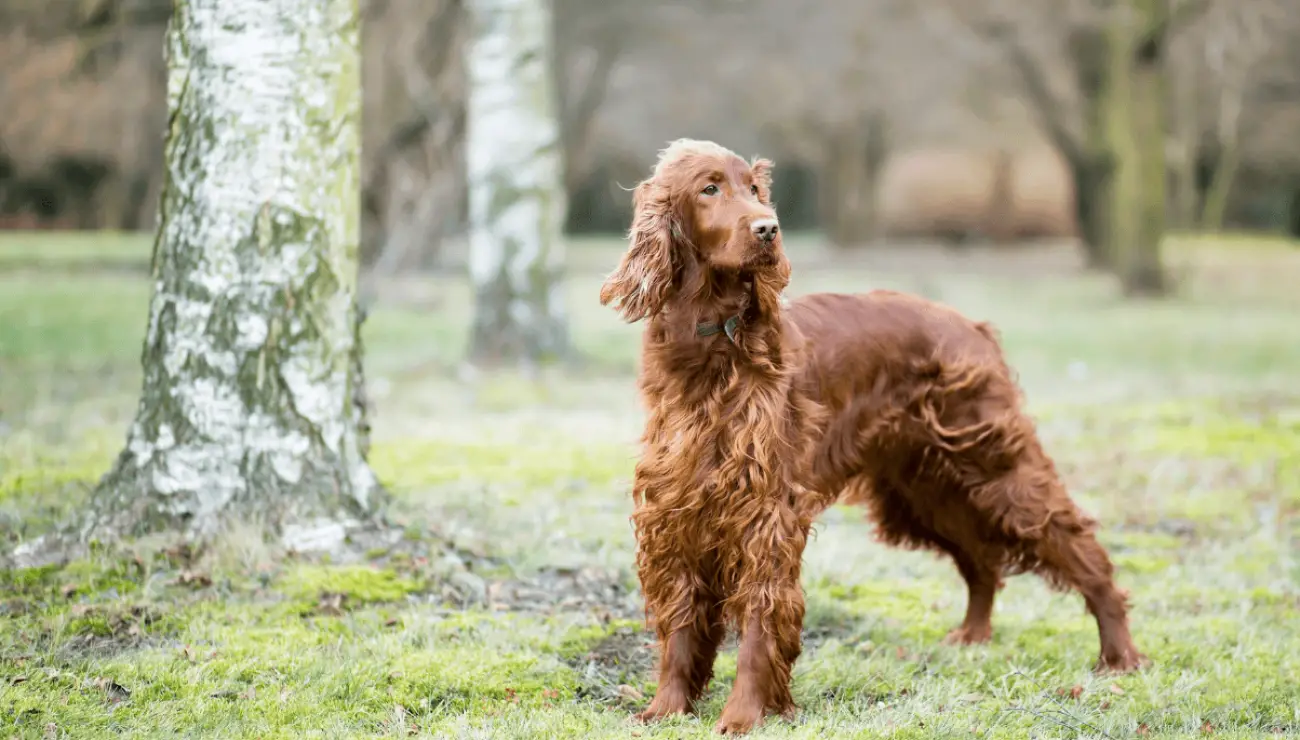
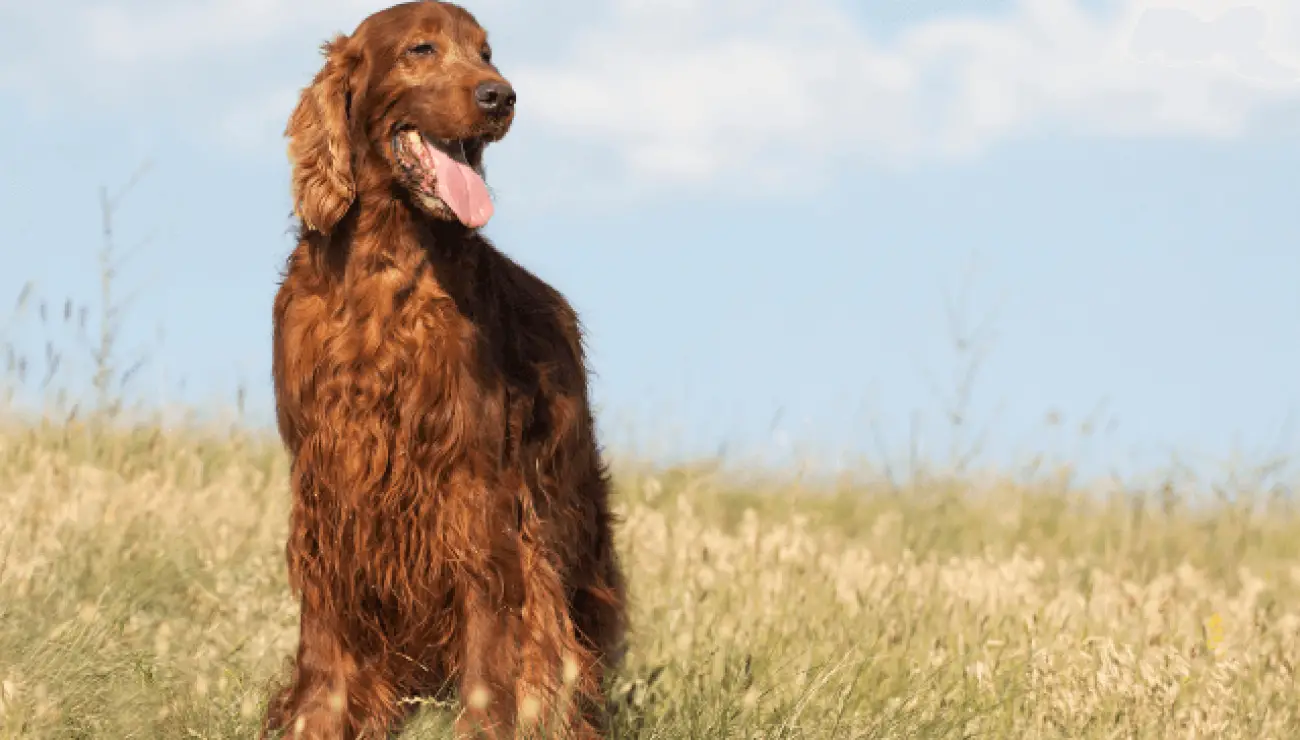
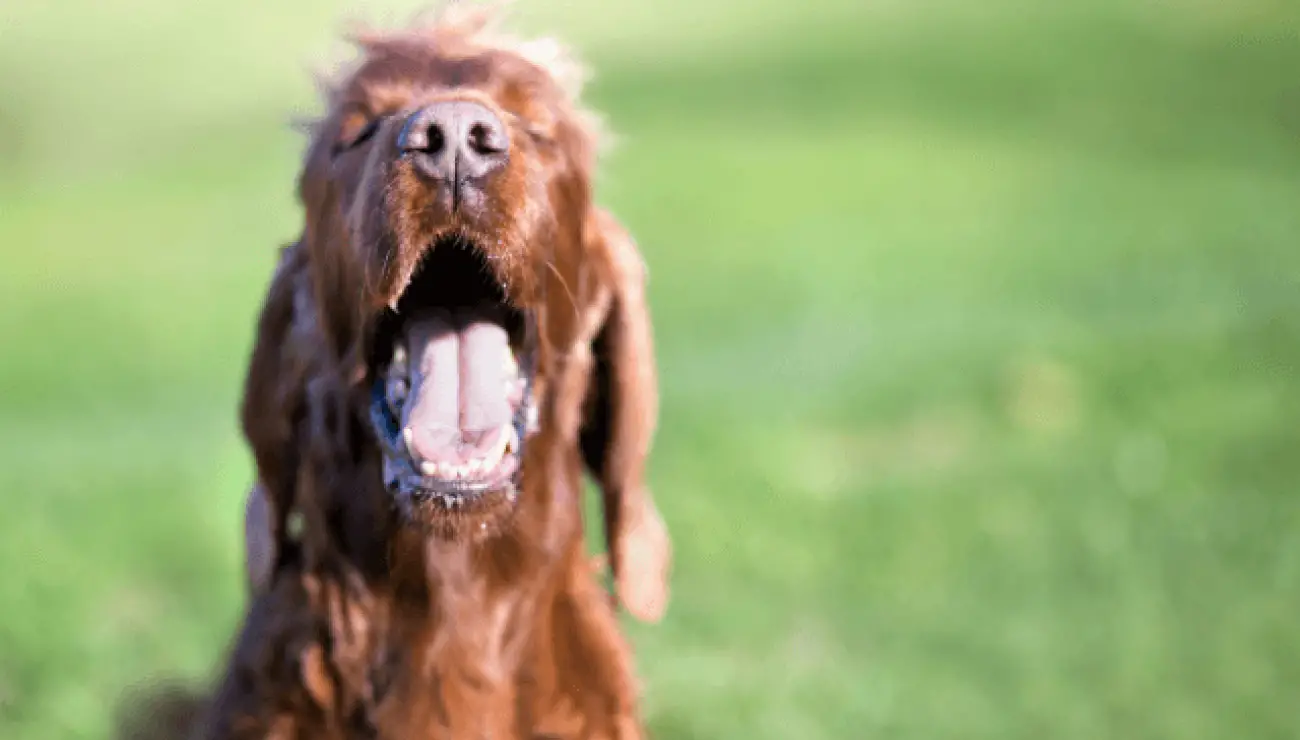
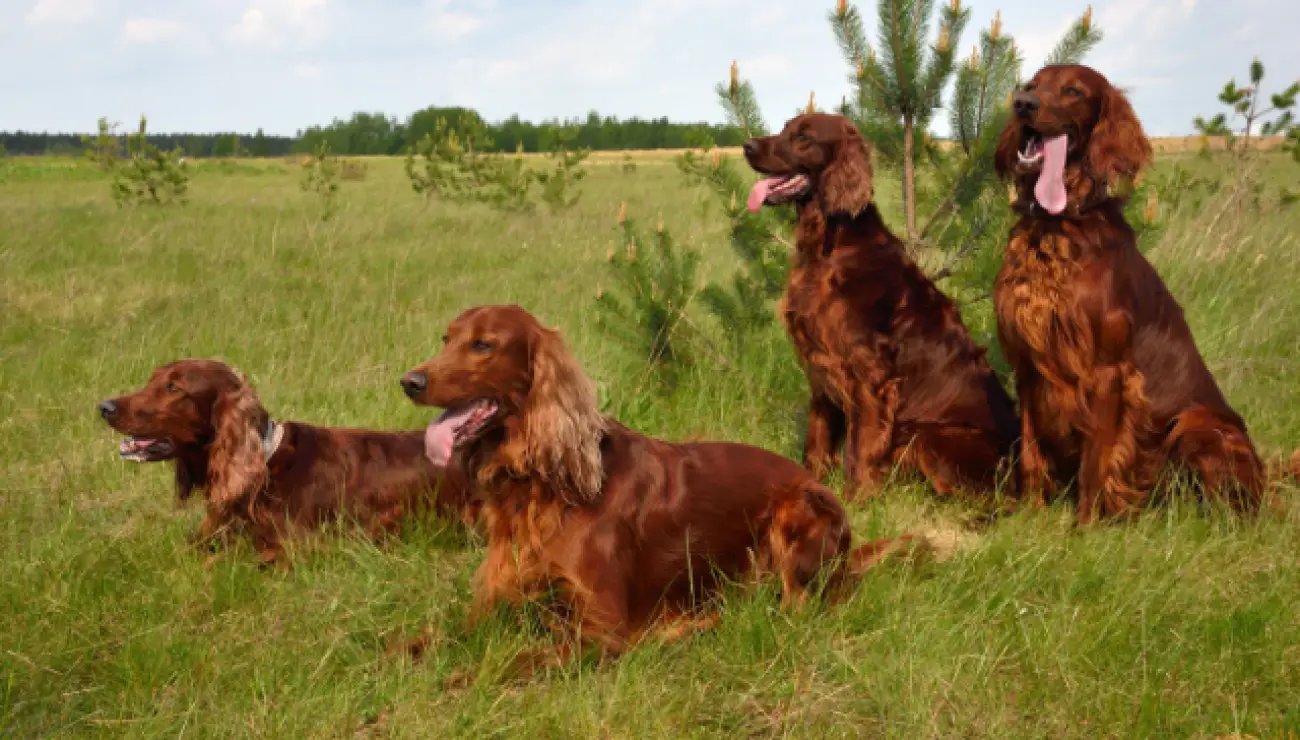
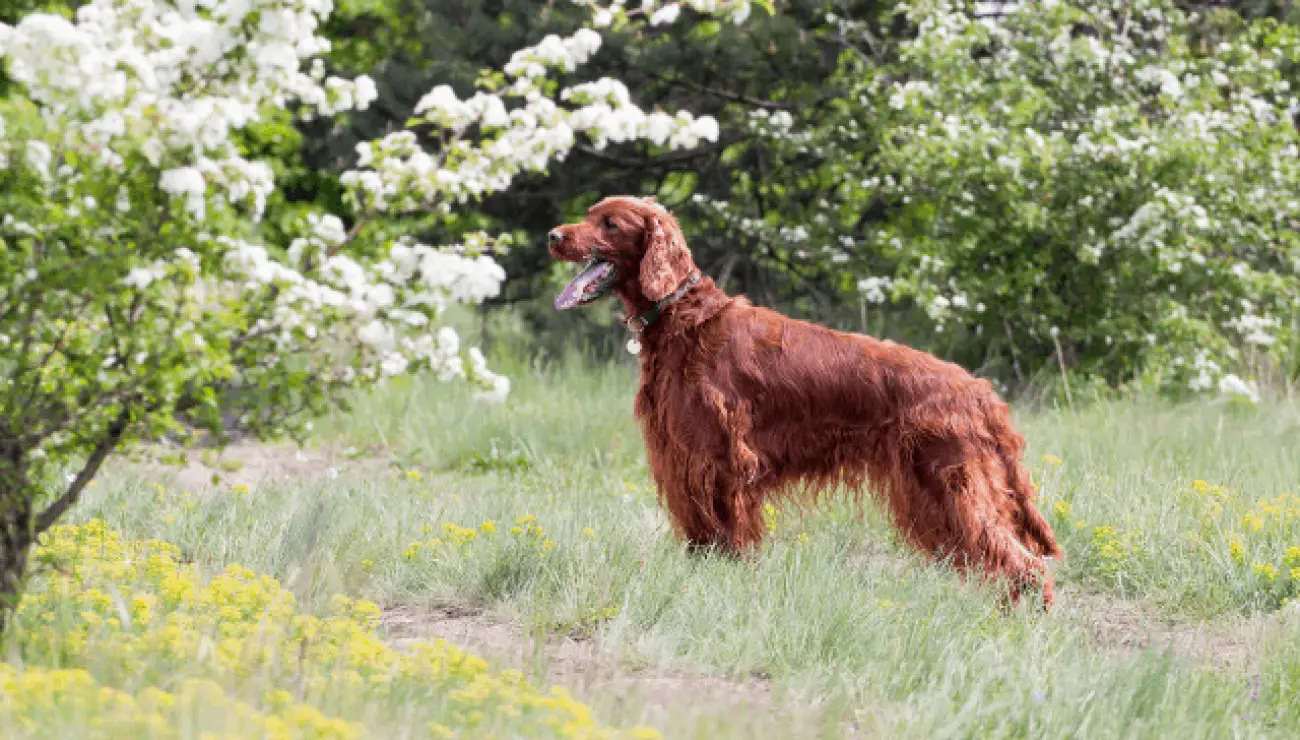
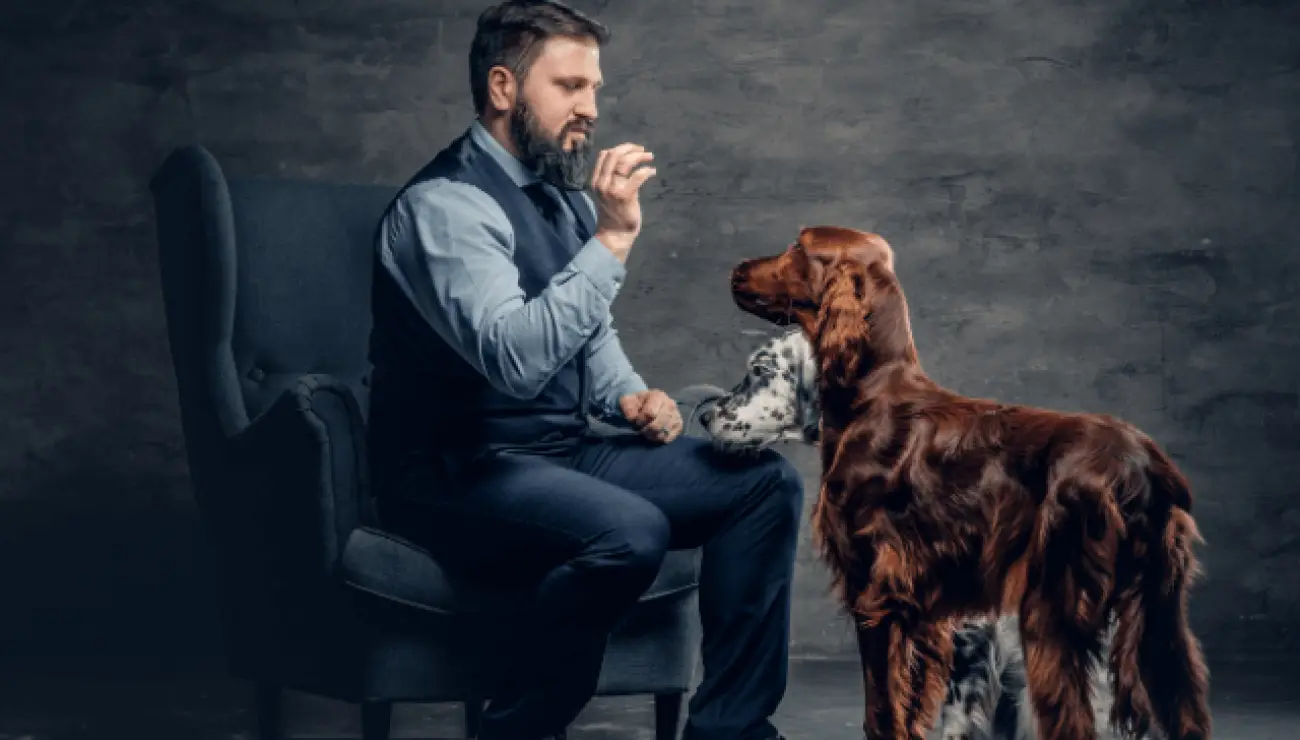
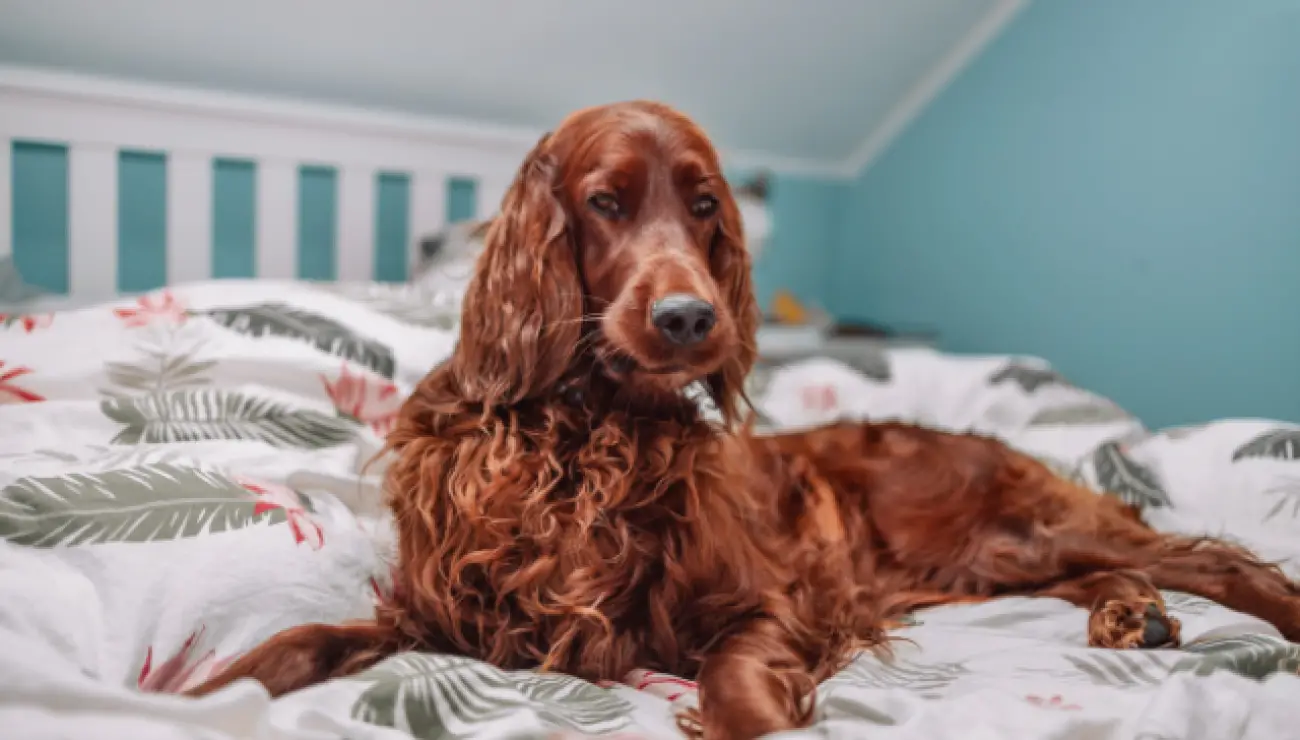
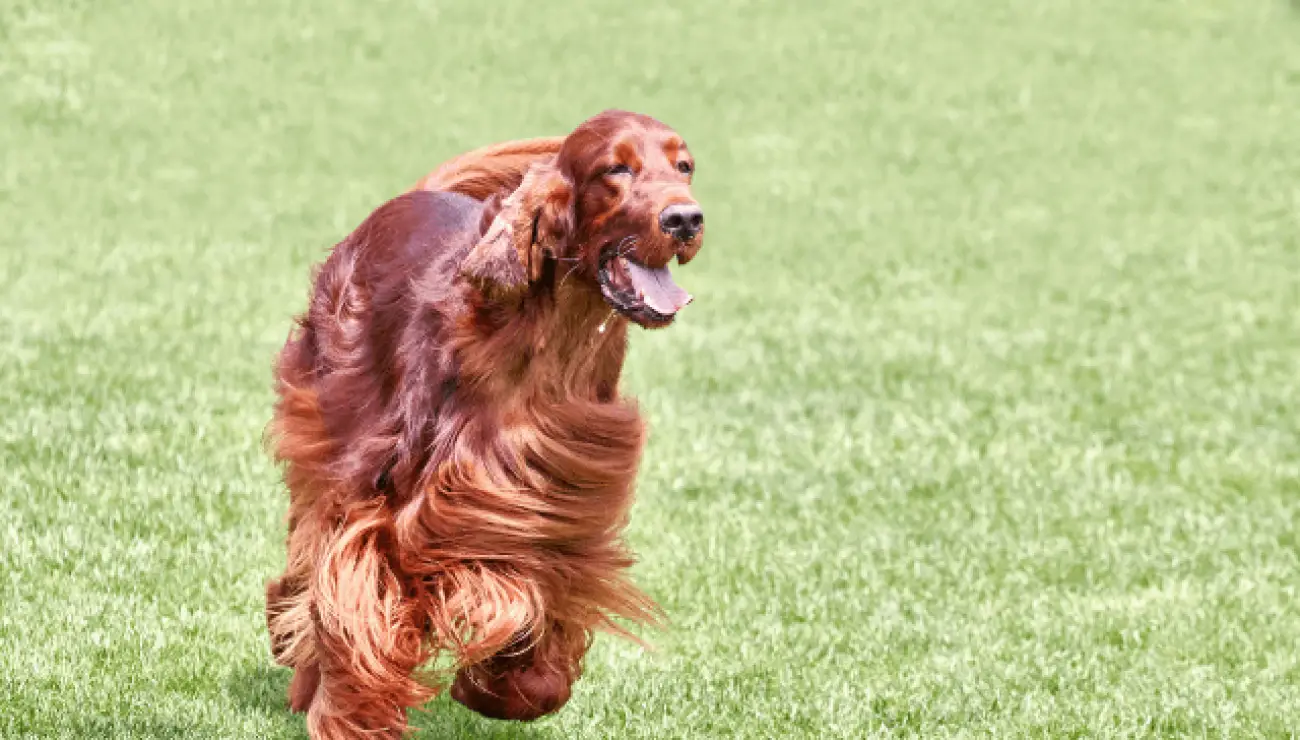
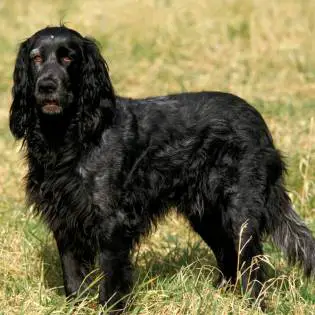



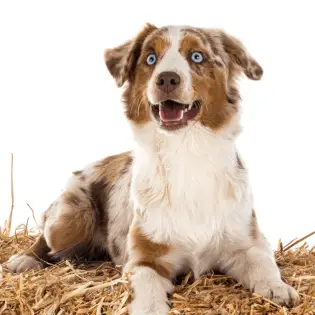






Share